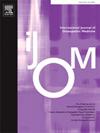How to Prepare for the Comprehensive Osteopathic Medical Licensing Examination of the USA level 2-Cognitive Evaluation (COMLEX-USA level 2-CE)
IF 1.5
4区 医学
Q2 MEDICINE, GENERAL & INTERNAL
引用次数: 0
Abstract
To complete undergraduate medical training and secure licensure, osteopathic medical students must pass standardized high-stakes examinations, including the Comprehensive Osteopathic Medical Licensing Examination of the USA Level 2-Cognitive Evaluation (COMLEX-USA Level 2-CE). The examination aims to verify learners' necessary clinical knowledge, diagnostic reasoning, required competencies for osteopathic physicians in training, and readiness before they advance to graduate medical education settings. As the number of students in osteopathic medical training increases, it is essential to advance opportunities for COMLEX-USA Level 2-CE preparation. This manuscript aims to support osteopathic medical students and osteopathic medical educators, learning specialists, academic advisors, and administrators in developing a successful preparation plan for the COMLEX-USA Level 2-CE. The tips within this manuscript align with the information presented in osteopathic medical school curricula and the content outline found within the National Board of Osteopathic Medical Examiners (NBOME) blueprint. These include an emphasis on preparation phases for planning, reviewing, and practicing as well as the importance of clinical curriculum, clinical examinations, NBOME Blueprint, clinical scenarios, and complete full-length examinations. The article is an opinion piece that describes how osteopathic medical students can prepare, practice, and develop more effective board preparation strategies to improve their COMLEX Level 2-CE score.
如何准备美国综合骨科医师执业资格考试2级认知评估(complex -USA level 2-CE)
为了完成本科医学培训并获得执照,骨科医学学生必须通过标准化的高风险考试,包括美国综合骨科医学执照考试2级认知评估(complex -USA Level 2-CE)。考试的目的是验证学习者必要的临床知识、诊断推理、骨科医生在培训中所需的能力,以及他们进入研究生医学教育环境之前的准备。随着骨科医学培训学生人数的增加,为complex - usa 2级ce准备提供机会是至关重要的。该手稿旨在支持骨科医学学生和骨科医学教育工作者,学习专家,学术顾问和管理人员在制定一个成功的complex - usa 2级ce准备计划。本手稿中的提示与骨科医学院课程中提供的信息和国家骨科医学检查委员会(NBOME)蓝图中的内容大纲保持一致。这些包括强调计划、复习和实践的准备阶段,以及临床课程、临床考试、nome蓝图、临床场景和完整的全长考试的重要性。这篇文章是一篇观点文章,描述了骨科医学院的学生如何准备、实践和制定更有效的董事会准备策略,以提高他们的complex 2级ce分数。
本文章由计算机程序翻译,如有差异,请以英文原文为准。
求助全文
约1分钟内获得全文
求助全文
来源期刊
CiteScore
2.20
自引率
36.80%
发文量
42
审稿时长
3 months
期刊介绍:
The International Journal of Osteopathic Medicine is a peer-reviewed journal that provides for the publication of high quality research articles and review papers that are as broad as the many disciplines that influence and underpin the principles and practice of osteopathic medicine. Particular emphasis is given to basic science research, clinical epidemiology and health social science in relation to osteopathy and neuromusculoskeletal medicine.
The Editorial Board encourages submission of articles based on both quantitative and qualitative research designs. The Editorial Board also aims to provide a forum for discourse and debate on any aspect of osteopathy and neuromusculoskeletal medicine with the aim of critically evaluating existing practices in regard to the diagnosis, treatment and management of patients with neuromusculoskeletal disorders and somatic dysfunction. All manuscripts submitted to the IJOM are subject to a blinded review process. The categories currently available for publication include reports of original research, review papers, commentaries and articles related to clinical practice, including case reports. Further details can be found in the IJOM Instructions for Authors. Manuscripts are accepted for publication with the understanding that no substantial part has been, or will be published elsewhere.

 求助内容:
求助内容: 应助结果提醒方式:
应助结果提醒方式:


